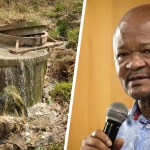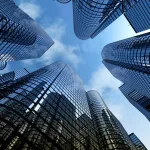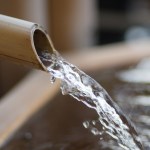SPONSORED CONTENT
SA’s water shortages – recovering, recapturing and reusing as strategies.

Water security challenges linger but solutions abound
South Africa is in a water crisis. Dry taps, limited supply and poor water quality are just some of the challenges South Africans face every day. What is the water situation in the country? And what solutions can South Africans implement?
Listen to the podcast
Unpacking the current state of water infrastructure in South Africa
The water crisis
In an Investec podcast water expert, Professor Anthony Turton says that the National Water Source Strategy study indicated that SA had allocated 98% of all the water available nationally. In other words, there was only 2% of the water left for existing lawful uses. “The simple reality is that we don’t have any water left to allocate and we have to start doing things better.”
He mentions that it’s important to understand Green Drop and Blue Drop.
“In South Africa, because we have a fundamentally, water-constrained economy, the engineering philosophy that has underpinned all the design has been an indirect reuse model. This means that all the water coming through the economy must be treated to a high standard. That’s the Green Drop Report. When it comes out of a pipe, at the end of the process, it goes back into the river and then it into a water treatment plant for making drinking water. That’s the Blue Drop Report.”
He says that in the last report that only 3% of our water coming out of the wastewater works is compliant, so 97% is non-compliant in some form or other.
“In addition, roughly 30% to 50% of all the water we put into our pipes gets lost. This is a big number. The simple reality is that our infrastructure is old and tired and must be replaced. So, if we’re going to be digging up our roads and putting in new pipes, then, let’s put two pipes in. One for drinking quality water and the other for water that you can water your garden with. We need water of different quality, at different prices, for different purposes, at different times, and in different places. And this is where we’re going, that is sort of, what I call a dual stream reticulation economy.”
Lesotho Highlands Water Project – Six-month shutdown
Amid this water crisis looms a critical challenge: the six-month shutdown of the Lesotho Highlands Water Project (LHWP), slated to commence in October 2024. This shutdown threatens to exacerbate existing water scarcity issues, particularly in Gauteng, where 60% of the water demand is met by this project.
The LHWP stands as a lifeline for millions of South Africans, diverting water from the highlands of Lesotho to supply the Free State and the greater Johannesburg area. Annually transferring over 1.27 billion cubic metres of water, the project not only sustains urban centres but also supports agricultural activities crucial for food security.
Yet, with essential maintenance work on the project’s tunnels set to begin, concerns abound regarding its impact. Residential areas and agricultural regions reliant on this water supply face the prospect of severe shortages, potentially leading to water restrictions and reduced water pressure. Farmers, in particular, are bracing for financial losses and reduced agricultural productivity, threatening livelihoods and exacerbating food security concerns.
The shutdown’s ripple effects extend beyond immediate water shortages. Industries dependent on consistent water supply face disruptions, while the strain on healthcare and sanitation systems could pose additional challenges. The situation calls for proactive planning and mitigation measures to minimise the impact on communities and essential services.
Efforts to address the water crisis must extend beyond short-term solutions. Investments in infrastructure and water management practices are imperative to ensure long-term water security. Initiatives such as rainwater harvesting, greywater recycling and desalination projects offer alternative water sources to diversify supply and reduce reliance on traditional sources.
Why energy is important to water supply
Electricity and water are intertwined. You need electricity to pump water from rivers and dams to a purification work. You need electricity to run the purification work. You need electricity to pump the water from the purification work to the reservoirs, all around the country. “There is a direct connection between water in your home and electricity,” says energy expert, Chris Yelland.
“It’s not too bad if you have stage one and two loadshedding, because there is water storage. When you have stage four or five and six, it’s starting to show. And when you’re having four-hour stretches a couple of times a day, you will have water shortages.”
Prof Turton says that every drop of water in Gauteng is pumped over the Drakensberg Mountain, from the Tugela River, using surplus energy on the national grid. “That’s what the Sterkfontein Pump Storage Scheme was designed for – to take the surplus energy, store it as a battery on top of the mountain. When they released on the other side, they recovered two-thirds of the energy they’d invested in getting it up the mountain, in the first place.”
Melanie Humphries, Head of Investec Sustainable Solutions

“Aging water infrastructure and the compounding pressures of load shedding on our national water systems have created a growing demand for our clients and their businesses to seek alternative options to supplement and secure their water supply.”
No end in sight to the water crisis
Prof Turton says that there are master plans, but much like the Integrated Resource Plan for electricity, we have analysis paralysis and not much transition to action and implementation.
“I’m a member of this SA Business Water Chamber – we’ve been engaging with the Presidency for a couple of years on this matter now. We keep on telling them that this is important, but it’s not coming to the top of the agenda, where it must be.
Recovering, recapturing and reusing are key to addressing water shortages in South Africa
Prof Turton states that SA has 48 billion cubic metres of water, but we will need about 63 billion cubic metres by about 2030 if we want to create full employment.
“We must start investing in recycling, recovering, recapturing, and reusing water. All our coastal cities are fundamentally water-constrained. Why? Because the water is being used upstream, inland, and what’s left the coastal cities get. But you’re surrounded by oceans. And I’m extremely bullish on seawater desalination.”
According to Prof Turton, the global benchmark number for seawater desalination is 35 US cents per cubic meter. In SA, from a river, the average price is around R10 to R12 a cubic meter. “So, we are not far from that point either. I’m talking 200 megalitres a day, one-quarter of the baseload for the City of Cape Town, that’s what we need. And that’s going to become increasingly investable. There’s a whole lot of good news stories around that.”
Backup water systems: a new necessity?
Water expert Pierre Lundberg says that the Constitution states that it’s the government’s responsibility to ensure we have access to good water. Water security is two things, accessibility of, and quality of water.
“So, typically, what we’re looking at is backup systems on a municipal feed. You have your water on a bypass going into a tank and then from the tank, with a variable speed drive pump, through a filtration system that goes into the house. You may not store water in a tank and leave it there. It is illegal.” Understand the by-laws, so you are clear on what you may and may not do.
Installing a borehole
If you are getting a borehole, he stresses that it’s important to understand the process. For instance, you must apply for permission, and it must be registered.
“When you start considering a borehole and before you put the infrastructure in, understand the treatment and maintenance cost. When you do drill for the borehole, and the water comes, understand what the yield is. The yield and the recharge is going to define what you need on the surface to be able to meet your demand.”
Rainwater harvesting systems
The next option is domestic rainwater harvesting. “Rainwater is not potable water – it must be treated. Understand it’s corrosivity – typical rainwater in SA is 5.6 pH to 5.6 pH and this is going to eat your piping. Then it doesn’t matter what filtration system you have; you’re going to start ingesting metal. You also have birds and rats on the roof that creates bacteria that goes into the water. The tanks are standing in the sun, and they heat up and then cool down. That’s the best breeding ground for different types of diseases, including Legionnaires disease”.
Greywater harvesting
The next option is greywater harvesting. It’s a good option if you have economies of scale, e.g. buildings. “But when you start going to small greywater harvesting, remember, you must take water from your showers and washing machine. You cannot take it from the toilet. You cannot take it from the sink where you’re washing plates with fat, grease, and oils. You can use greywater for irrigation, and you’ll recirculate it into your house for toilet use.”
Then there’s blended solutions. People are blending municipal, borehole, greywater and rainwater to find a solution that works for them.
Prof Turton says that economies of scale matter. “Firstly, the cost per unit of water consumed, processed or stored, is better if you can share that cost. And the second thing is expertise, because you must understand certain fundamental things related to chemistry and physics and maybe biology.
“But the simple reality is that, at national level, I don’t see the ship being turned around easily, maybe in the next decade, if we’re lucky. I think you’re going to start seeing your entrepreneurial type of people coming forward to provide those solutions, to outsource the liability, if you like, from your trustees or the directors, whatever.” DM















